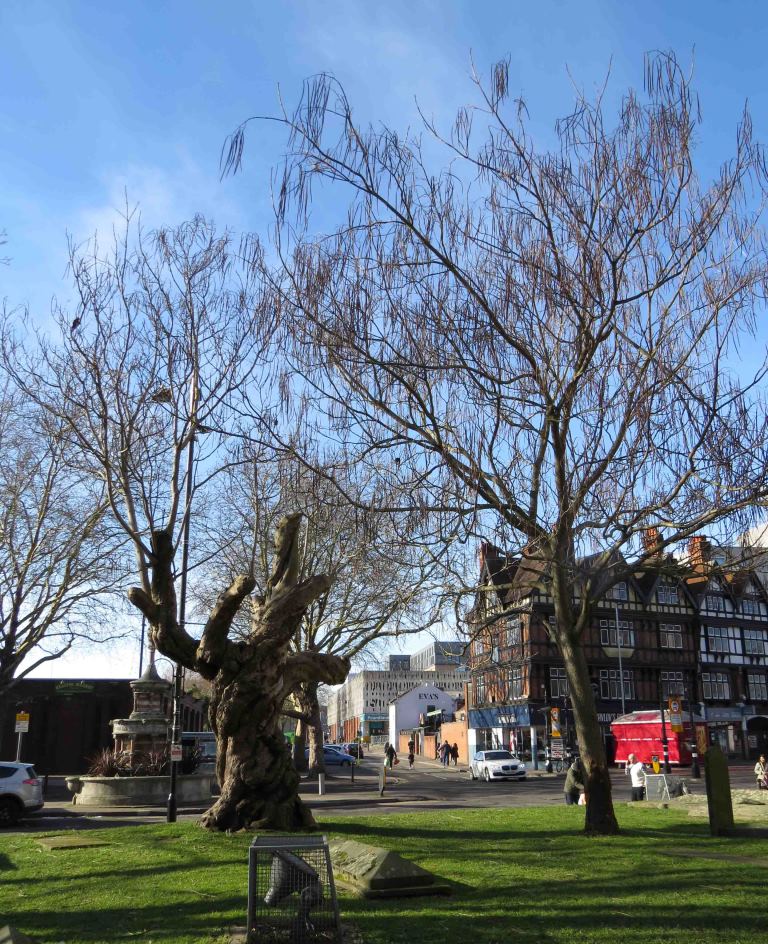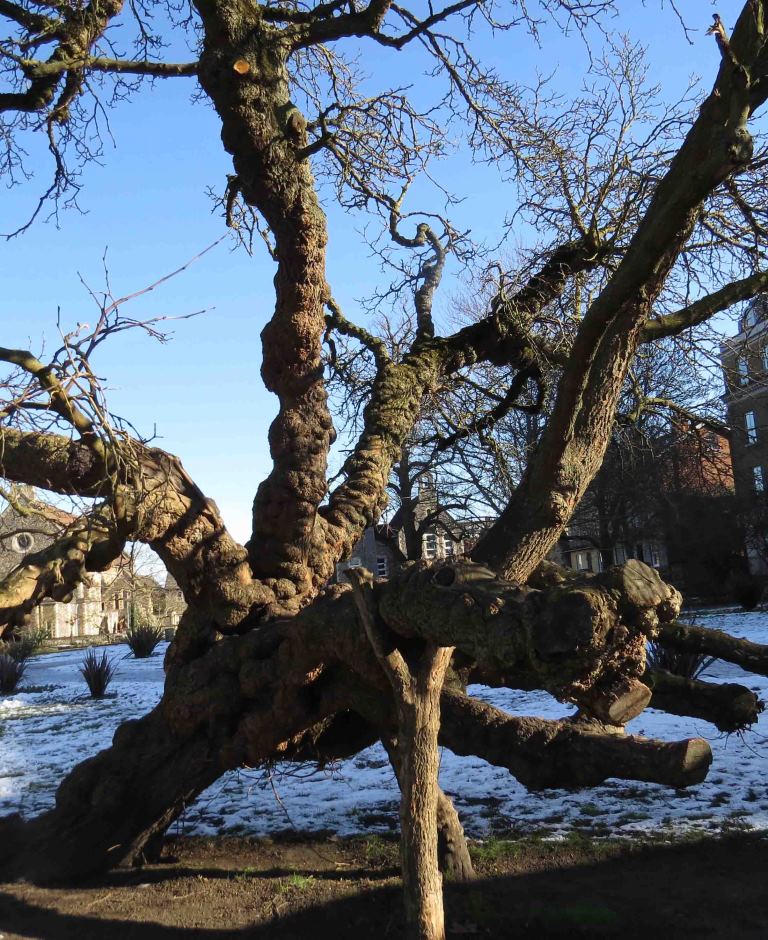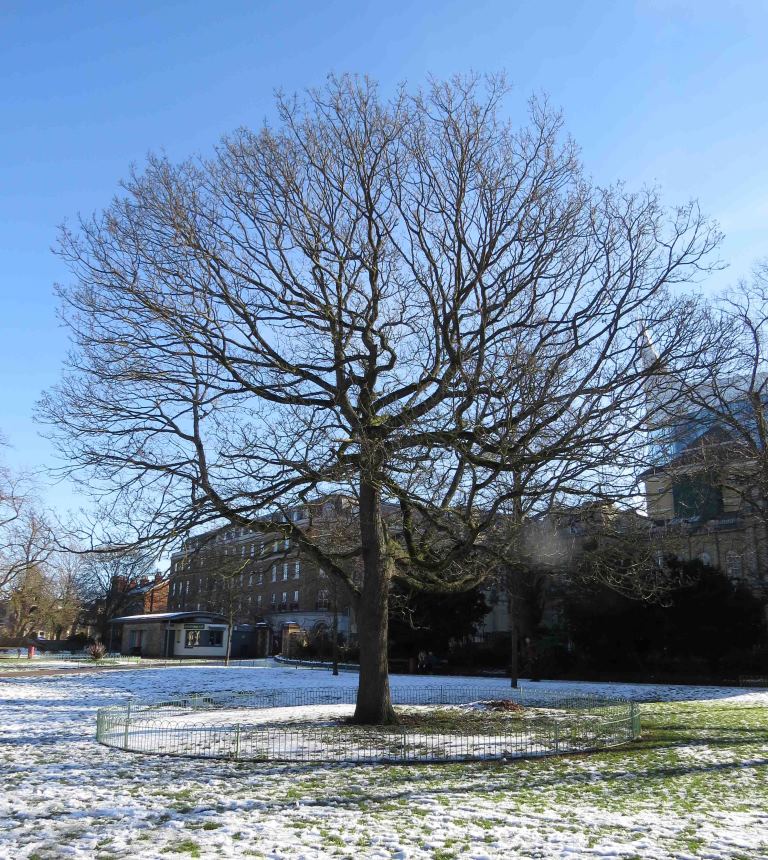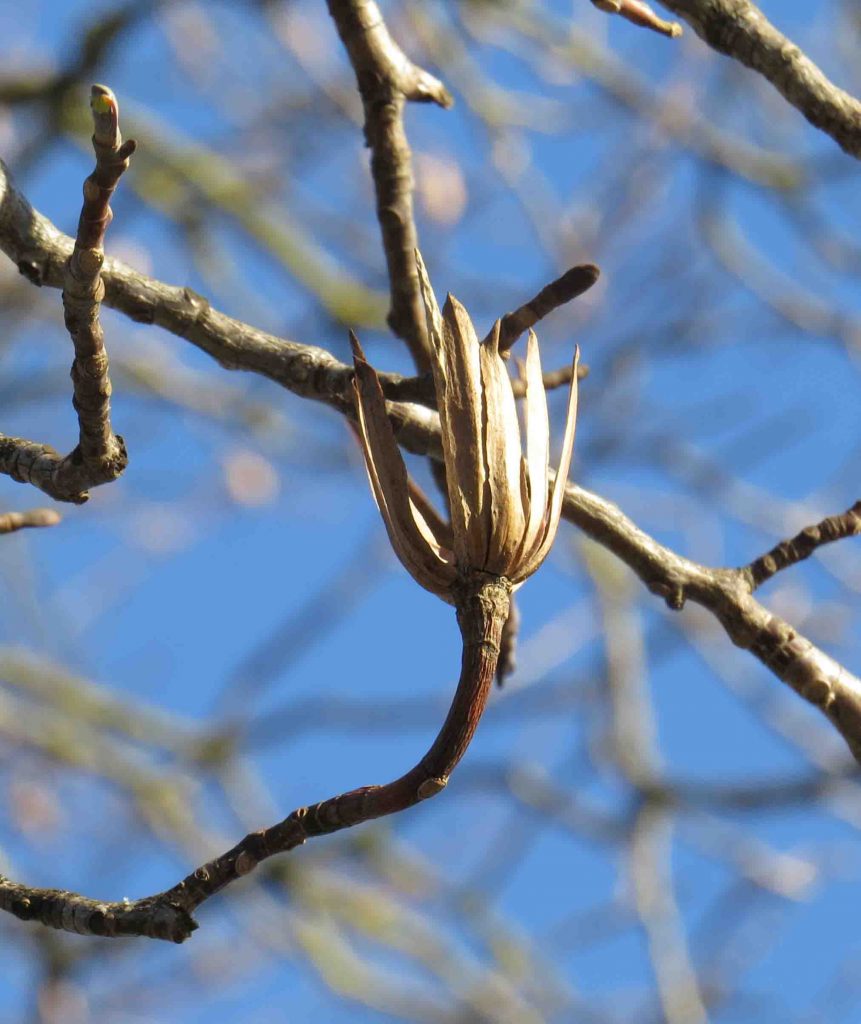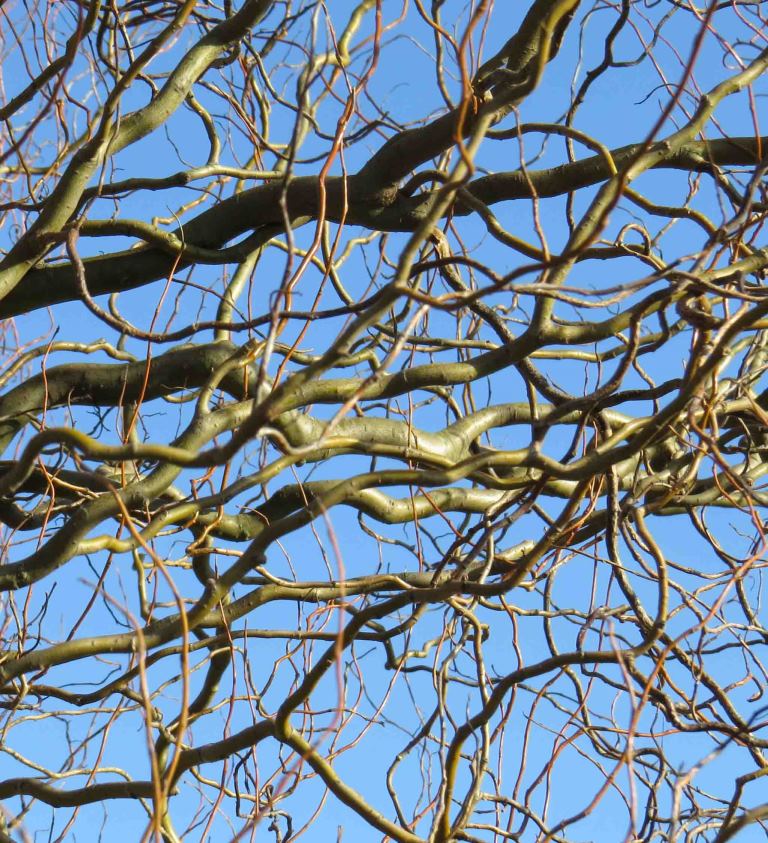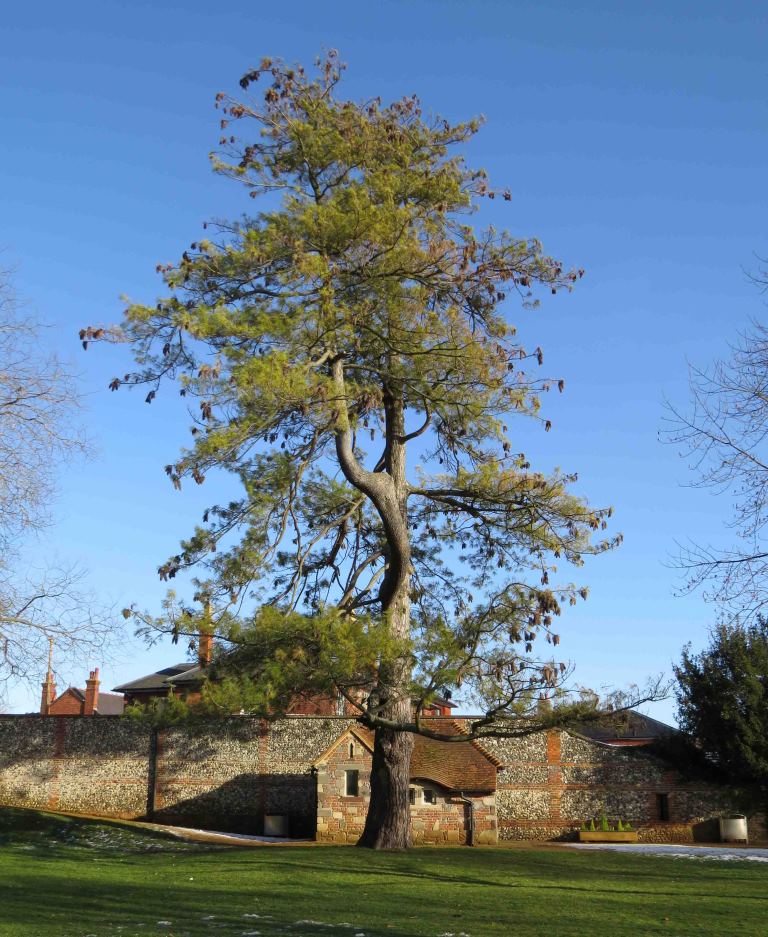Marcus Wheeler led a walk looking at trees in Central Reading on the bright and sunny morning of Saturday 2 February. Following days of snow, a partial thaw and a hard frost, a thin carpet of crisp snow covered the ground. The pavements were mostly clear, but there were still lethally slippery stretches of ice in places. Almost all of the attendees arrived by bus or on foot. Meeting place was the churchyard of St Mary’s Church. Near the west door is the twisted trunk of an old Indian Bean Tree. It had been severely pollarded and a younger replacement tree had been planted nearby. But the old tree has since sprouted a number of healthy-looking new branches. In the south-west corner of the church yard is a small lollipop-shaped Box tree, quite unlike the usual bushy hedge form. On the eastern side of the churchyard is an enormous London Plane tree. Marcus pointed out the smooth leathery leaves which can be washed clean by rain water and the flaking regenerative bark, both features which enable the tree to grow in polluted urban conditions. On the north side of the churchyard is a big Holm Oak. Next stop was the paved area in front of the Old Town Hall, where a group of Whitebeams have been planted. The walk continued along an alleyway to the churchyard of St Lawrence’s Church. Trees here included a Judas Tree and a big Copper Beech. Crossing the road, the next destination was the Forbury Gardens. On the south side of the gardens, surrounded by a low fence, is the Verdun Oak. It was grown from an acorn collected from the battlefield in 1916. Other trees seen here included a Black Mulberry, a Ginkgo, a Handkerchief Tree, a Tulip Tree and a Paperbark Maple.
The walk continued across Reading Bridge and into Christchurch Meadow. A pair of Wellingtonias had been planted, one on each side of the bridge. A row of tall Lombardy Poplars line the east side of the meadow and a line of Weeping Willows can be seen in the north-east corner. Heading west, a Caucasian Wingnut tree had distinctive dangling columns of seeds. Marcus commented that Birches were one of the first trees to recolonise Britain after the last ice age, along with Scots Pine and Juniper. As well as several big Silver Birches, the meadow has a few very white-barked non-native birches. He pointed out that the cones on an Italian Alder were significantly larger than those on our native Alder. Other trees seen in the north-west side of the meadow included Black Walnut, Corkscrew Willow, Hornbeam and Horse Chestnut with thick twigs and big brown sticky buds. The final destination was Caversham Court. The tall Limes at the entrance are covered in Mistletoe. An old Black Mulberry has recently split and fallen over, but it continues to grow from its prone position. Near the river is a tall Wellingtonia with surprisingly spongey bark. Beyond are a Cedar of Lebanon with level branches and a Blue Atlas Cedar with ascending branches. On the west side is the oldest tree in the garden, an ancient Yew, a ‘family’ tree. At the centre is a massive trunk. Spreading side branches have dropped to the ground and rooted, sending up a circle of younger trees. Snowdrops were flowering under the outer branches. Finally, on the east side of the garden is a big Bhutan Pine, with its needles growing in bundles of five.
Indian Bean Trees in St Mary’s Churchyard Black Mulberry in Forbury Gardens Verdun Oak in Forbury Gardens Tulip Tree in Forbury Gardens Corkscrew Willow in Christchurch Meadow Bhutan Pine at Caversham Court
Pictures by Fiona Brown

